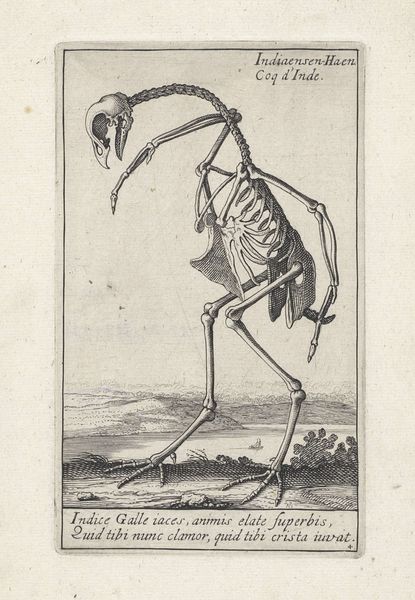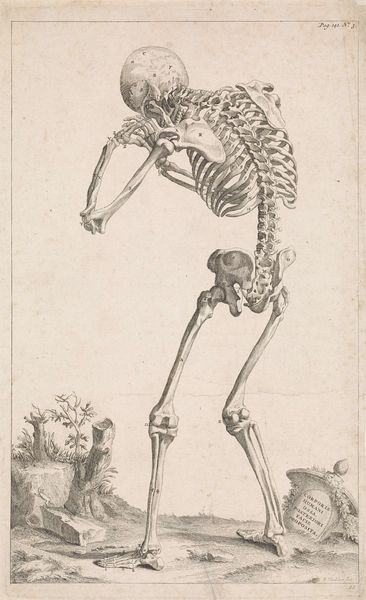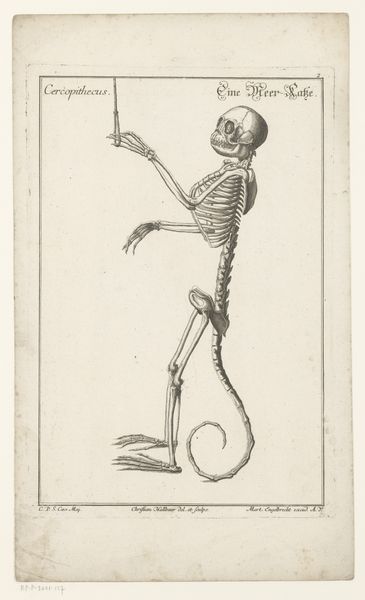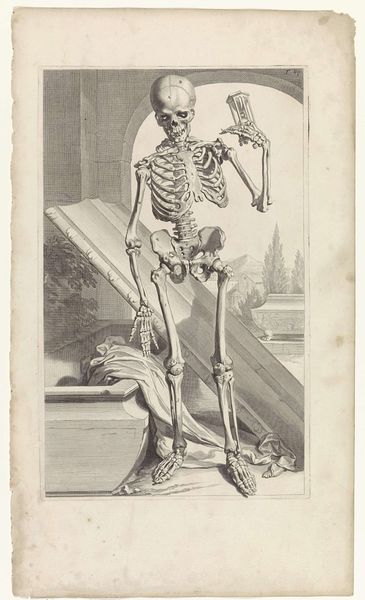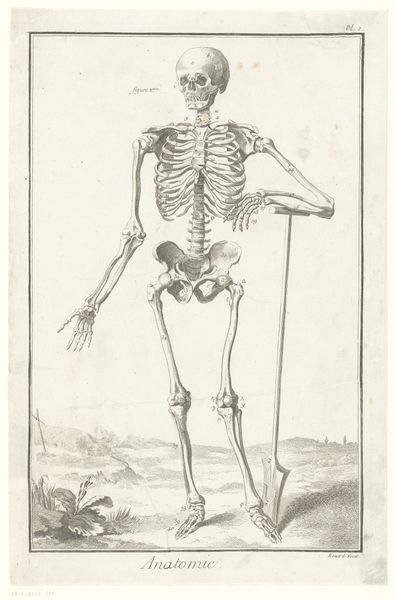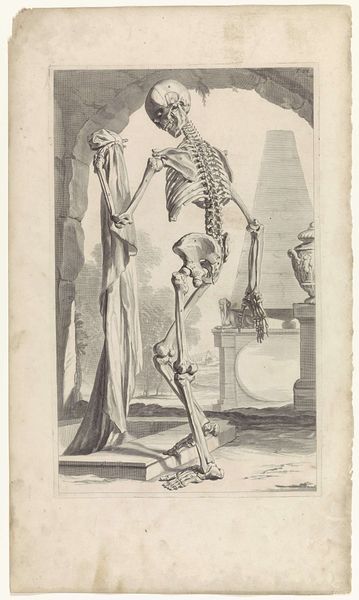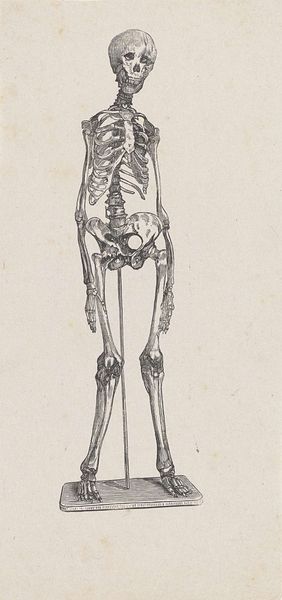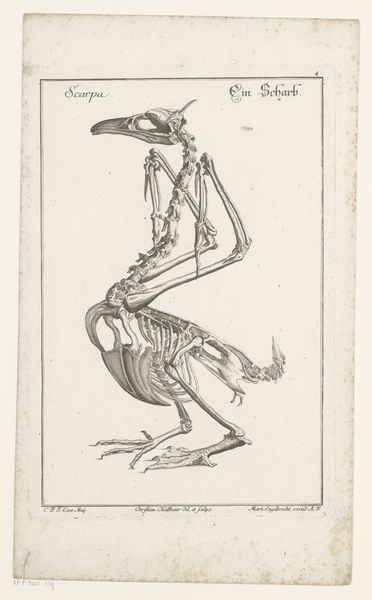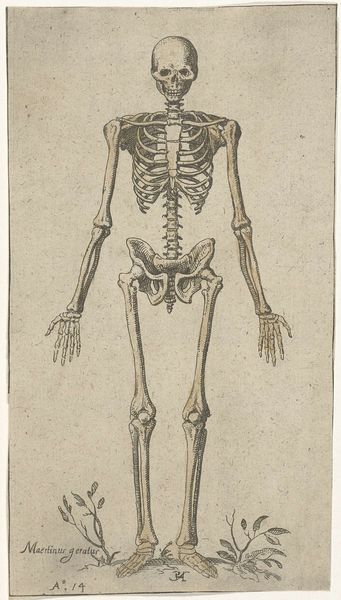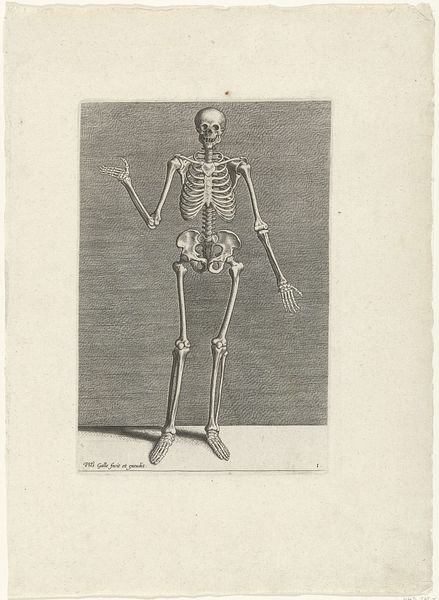
print, intaglio, engraving
#
allegory
# print
#
pen illustration
#
pen sketch
#
intaglio
#
mannerism
#
figuration
#
form
#
ink drawing experimentation
#
line
#
history-painting
#
engraving
Dimensions: width 141 mm, height 215 mm
Copyright: Rijks Museum: Open Domain
Editor: Here we have "Death of Sin Brings a New Man to Life," a 1550 engraving by Dirck Volckertsz Coornhert, currently residing at the Rijksmuseum. It's… intense. The starkness of the skeleton, coupled with the arrow piercing its skull, creates a rather unsettling mood. What do you make of this piece? Curator: Unsettling indeed, and brilliantly so. Coornhert captures that moment of utter transformation. Notice how death, the skeleton, carries both the arrow of its demise and the apple, symbol of original sin. It's almost as if death itself is being repurposed, made instrumental for something new. Editor: Repurposed? I hadn’t thought of it that way. The arrow feels purely destructive at first glance. Curator: Ah, but that's where the magic lies! Mannerism, the artistic style, delights in such ambiguity. Consider the inscription: "Peccatorum mors producit novum hominem ad iustitiam" – "The death of sinners brings forth a new man to justice." Do you see it now? Death is the catalyst, clearing the way for rebirth. It’s rather optimistic, in a macabre sort of way. Editor: I see what you mean. It’s not just death; it’s *necessary* death. So, it’s about moral renewal? Curator: Precisely! Think about the context: the Reformation, religious upheaval… the idea of shedding the old to embrace the new was powerful stuff. Coornhert is turning what appears monstrous into a beacon of hope. I also see a rather sardonic, even witty side here too – the composition itself seems like a rather bad joke. Editor: Wow, I came in thinking ‘morbid,’ and now I’m contemplating rebirth and satire. I’ll definitely look at engravings differently from now on! Curator: And that, my friend, is the best kind of art encounter: the unexpected detour. There is such pleasure in it!
Comments
No comments
Be the first to comment and join the conversation on the ultimate creative platform.
